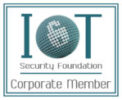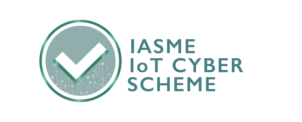Peter Hall
May 30 2024
When it comes to cloud storage, there are some common myths that it’s not secure. However, these concerns are often based on misunderstandings. Cloud computing has truly transformed the way companies operate, offering flexibility and new ways to manage data; but with great power comes great responsibility.
We need to take care to protect our information in the cloud just as we would with any asset. Effectively embracing the benefits of cloud technology means finding balance—making the most of what the cloud offers while keeping our data secure. Let’s explore how we can achieve this balance and maintain strong data security in the cloud.
Benefits and Transformative Power of Cloud Technology
Cloud technology is a game-changer for businesses, big and small. One of the biggest advantages is how it helps improve cost efficiency thus save money. Instead of operating computers and servers, companies can use the cloud and only pay for what they need. As the business grows, the cloud can grow with it, making it an adaptable and scalable solution.
Speed and flexibility are huge too. The cloud lets businesses move quickly, making changes or trying new things without a lot of delays. If a company needs to test a new idea, they can set it up in the cloud in no time. This means they can keep up with the fast pace of the market.
Remote working is another perk. With the cloud, teams can get to their work from any place, provided an internet connection. This makes it possible for people to collaborate even when geographically segregated. Files and information can be shared in seconds, helping everyone stay on the same page and move projects forward no matter their location.
In short, the cloud offers a powerful set of tools that can transform how businesses work. It’s not just about cutting costs or being able to scale; it’s about a whole new level of agility and collaboration that can lead to better innovation and growth.
Safeguarding Sensitive Data in the Cloud
When it comes to keeping sensitive data safe in the cloud, there are some key steps we can take. Encryption is akin to secret code that keeps data undecipherable. Even if someone gets to the data, they can’t understand it without the key. This means that when the data is sitting in the cloud or being sent from one place to another, it’s protected due to its unintelligibility.
Access controls are also crucial. They act as secure doors, only allowing passthrough to the people who really require it. This way, businesses can control who can see or change important data. By setting up different permission levels, they make sure that only the right people have access to sensitive information.
Another layer of protection is robust authentication methods, that’s where multi-factor authentication (MFA) comes into play. MFA is like having a double lock on your door. It asks for more than just a key (password)—maybe also a code from your phone or a fingerprint. This makes it much harder to gain unauthorised access your data.
All these measures—encryption, access controls, and strong authentication—work together to create a secure environment for data in the cloud. By using these tools, businesses can feel confident that their data is safe from prying eyes and secure from unauthorized access.
Best Practices for Data Integrity in the Cloud
To make sure data in the cloud stays accurate and undamaged, there are some important steps to follow. First, regular backups are a must. This is like having a spare key for your house. If anything goes wrong, you can use the backup to restore your data to how it was. But don’t just make backups—test them out to make sure they work when you need them.
Following the rules is key, too. There are laws and standards that tell you how to handle data safely. Sticking to these helps keep data secure and avoids any legal ramifications. Whether it’s health records or financial info, knowing and following these guidelines is huge for keeping data safe.
Cloud monitoring is another best practice. This is essentially keeping an eye on what happens in real time similarly to having a security camera. It means watching for strange activity that could signal a problem. If you find something odd, you can act fast to stop it before it becomes a bigger issue.
Lastly, having a solid plan for when things go wrong is critical. This is your disaster recovery plan. Think about all the things that could go wrong—from natural disasters to cyber-attacks—and plan what to do. This way, if disaster strikes, you’re ready to get back up and running without losing precious data.
By backing up data, following rules, watching for odd activity, and planning for the worst, businesses can keep their data in the cloud safe and sound.
Addressing Common Misconceptions about Cloud Security
When we talk about keeping data safe in the cloud, there are misunderstandings we should clear up. One of the biggest is who’s responsible for security. In cloud computing, it’s a team effort—the cloud service provider and the user have to work together. This is called the shared responsibility model. The provider keeps the cloud secure, like a landlord makes sure an apartment building is safe. But the user has to secure their own data, like you would lock your apartment door.
Some folks worry that their private information isn’t private in the cloud. But the truth is, cloud companies know that privacy is of the upmost importance, and they put strong protections in place. With the right settings and precautions, your personal data can be just as private in the cloud as it is anywhere else.
Lastly, let’s talk about what cloud service providers do in terms of security. They act as cloud guardians. They watch over the infrastructure, patch up security holes, and put up the guard when faced with attacks. However, its crucial to understand that they don’t protect everything. It’s up to you to manage your data, use strong passwords, and control who can access your info.
By understanding the shared responsibility model, privacy protections, and the role of providers, we can see that cloud security is strong when everyone plays their part.
Cloud Configuration Reviews
Organisations that have moved or are looking to move onto cloud infrastructure should consider performing a Cloud Configuration Security Review that tests the configuration of the chosen cloud providers management interfaces for security misconfigurations, as a critical requirement.
This is an open book approach to security testing that ensures that available security options are configured, that systems are locked down, and that accounts with access are appropriately protected.
The specifics of the testing depend entirely on the deployment and features in use on the target cloud platform, however some commonly assessed areas include:
Identity and Access Management – Ensuring account utilise multifactor authentication and adhere to the principle of least privilege.
Storage – Ensuring that permissions to storage such as AWS S3 Buckets and Azure Storage are locked down and that keys are protected.
Network and Instance Security – Ensuring that the cloud platform adequately filters traffic and segments services.
Transit Security – Ensuring that data in transit between systems is encrypted and the configuration is hardened.
Logging and Monitoring – Ensuring that any actions taken within the cloud platform, and that may impact the systems security, are appropriately logged and that significant issues are highlighted to administrators for review.
Remote Access – Ensuring that remote access to the cloud platform is hardened against internet-based attacks.
Key Management – Ensuring that services such as Azure Key Vault and AWS Key Management are appropriately used and hardened, and that logging is enabled.
Implementing a Robust Cloud Security Strategy
Creating a robust security plan for the cloud starts with assessing the risks. This means looking closely at what could go wrong and how it could affect your data.
Choosing the right cloud service is a big part of your security plan. There are different types for example: IaaS (Infrastructure as a Service), PaaS (Platform as a Service), and SaaS (Software as a Service). Each one offers different levels of control. IaaS is like renting the land to build your house on. PaaS is like renting the house, and SaaS is like renting a hotel room. You need to pick the one that fits how much you want to manage and secure yourself.
Keeping your cloud safe doesn’t stop once your plan is set. You must keep an eye on things all the time and be ready to change your plan if you need to. Having a security system in place means you need to check it and update it to make sure it keeps working right and ensure operational effectiveness.
Teaching users about safe practices is also key. Everyone who uses the cloud needs to know how to keep data safe. By being proactive and providing education to users in this area attacks risk can be reduced as damage can be contained or even be thwarted before they occur.
With a thorough risk check, the right cloud service, correct configuration, ongoing monitoring, and good user training, you can build a strong defence for your data in the cloud.








